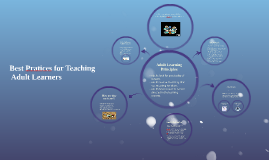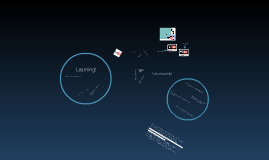Best Teaching Models for
Transcript: ReFerences Life Management Topics for the Direct Instruction Model In the New American Lecture Model, connections are made to previous learning; a means of recording information, active participation, periodic thinking reviews, and activities for synthesis and reflection are all incorporated (Silver, Strong, and Perini, 2007). The Guided Discovery Model may be more expedient for teaching the intricacies of a concept than the New American Lecture model because the use of examples and non-examples build deeper understanding of the concept, and the teacher would have more control over the direction of discussion than with the New American Lecture Model. When comparing to the Concept Attainment Model, I recommend the Guided Discovery Model for Life Management Subjects. GDM offers some of the same benefits as CAM, such as encouraging critical thinking and deepening understanding of concepts, but is more adaptable to Life Management topics. In CAM students are given examples and non-examples and they come up with the concept; in GDM students are clued into the concept first and then given examples/non-examples to build understanding of the concept. I see this as more useful in LM topics, which tend to be more skill-based than concept-based. Eggen and Kauchak (2012) describe the Scientific Method as "a pattern of thinking that emphasizes asking questions, developing hypotheses to answer the questions, and testing the hypotheses with data” (p. 171). Since most Life Management topics are skills-based (cooking, sewing, and childcare, the Scientific Method Model is not especially applicable. The Guided Discovery Model could be adapted to skills-based curriculum much more easily; for example, actual examples of food or sewing products or toys for toy safety could be used as examples/non-examples. Compared to the Scientific Method Model Eggen, P. and Kauchak, D. (2012). Strategies and models for teachers: Teaching content and critical thinking skills (Custom edition for Marygrove College, taken from 6th ed). Boston: Pearson. Silver, H.F., Strong, R.W., and Perini, M.J. (2007). The strategic teacher: Selecting the right research-based strategy for every lesson. Upper Saddle River, NJ: Pearson. Examples of Life Management Topics for the Guided Discovery Model In Conclusion... The Guided Discovery Model is a better choice for Life Management topics where a concept is being taught to students because it encourages critical thinking, helps students connect to prior knowledge, and deepens understanding about the concept; it is better than the Concept Attainment Model for Life Management topics because it offers more initial direction than CAM. The Scientific Method model has quite limited applications in LM. The New American Lecture and Direct Instruction are useful models for LM topics, as well, but less suited for concept teaching than the Guided Discovery Model. Best Teaching Models for Life Management Choosing a Teaching Model The Direct Instruction Model is based on " effective modeling, emerging independence, learning by questioning, and ongoing assessment" (Silver, Strong, and Perini, 2007, p. 38). In this model, the teacher breaks skills into steps, demonstrates doing the steps, leads students through doing the steps, has students visualize themselves doing the steps, has students practice, gives more examples to practice, and ties the skill to a performance task. For most Life Management topics, DIM is very effective. When trying to get students to understand the intricacies of a concept, however, the Guided Discovery Model could be very useful. Nutrition Topics: Differences between healthy/unhealthy foods; USDA and FDA characteristics; serving size vs. portion size; recommended daily allowances and MyPlate recommendations; functions of nutrient groups Consumer Education Topics: store types; consumer decision making; budgeting; consumer vocabulary - sale, bargain, discount; comparison shopping Childcare: What makes toys safe for different ages; what makes a good babysitter, what makes a reliable/responsible employee Compared to the New American Lecture Model The Direct Instruction Model lends itself very naturally to skills instruction. In Life Management, this model would be very effective for cooking skills, recipe reading, sewing skills, tablesetting, and budgeting. Compared to the Direct Instruction Model

















